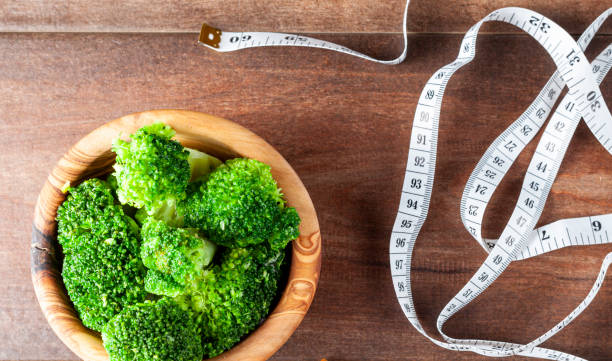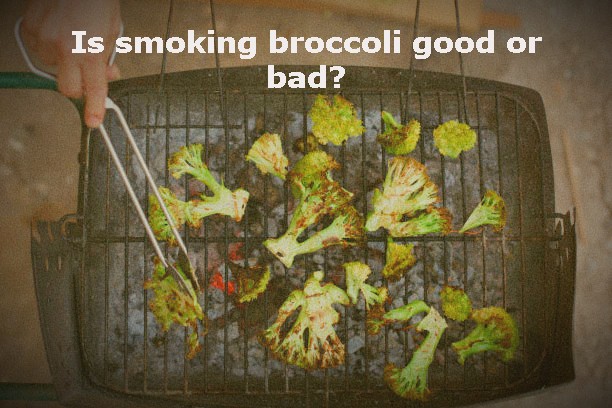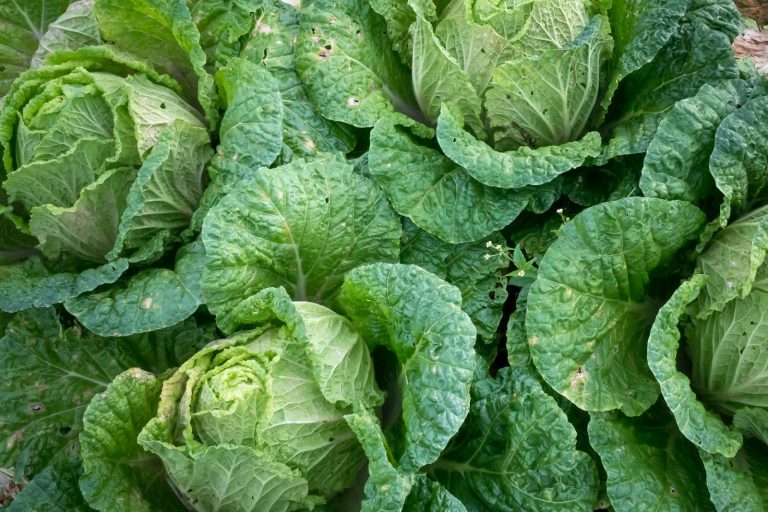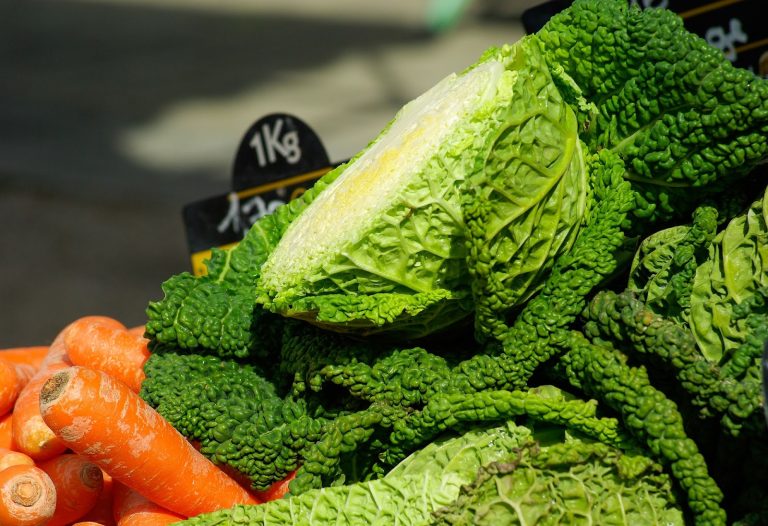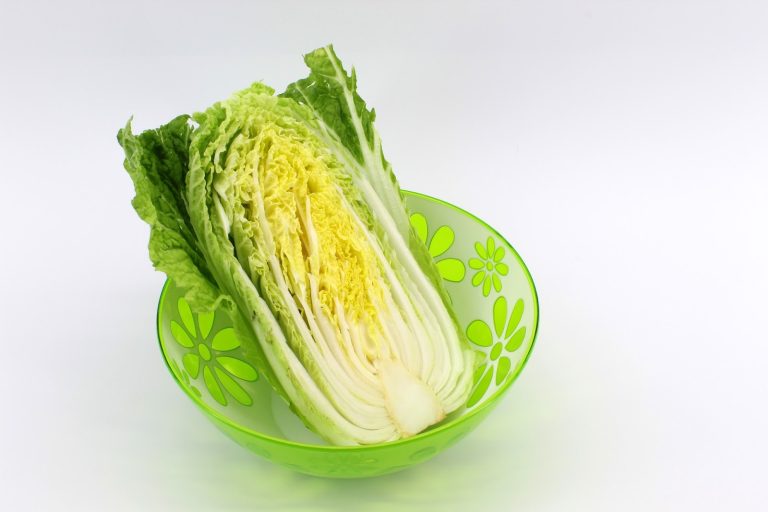Table of Contents
Introduction
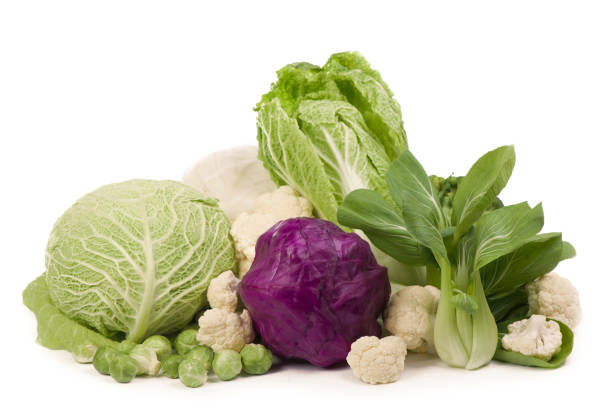
If I came across this blog post two years ago, I would have wondered, “What does it matter? Isn’t cabbage just cabbage? Which Cabbage Is Best For You? Are all kinds of cabbage not good for me?” Well, it matters because all cabbages matter, and just as their sizes, shapes, colors, and textures differ, so do their best uses, flavors, and in some cases, nutritional profiles. Let’s take a look into the world of cabbages and find out if there is a cabbage that is best for you.
Types of Cabbage
Different varieties of cabbages exist and they can all be used in a variety of dishes – salads, stews, soups and fillings, etc. While some varieties are best suited for some dishes because of their flavor and texture, the choice of which to use is still a matter of personal preference. Below are the common types of cabbages and the differences between them:
- Green Cabbage: Green Cabbage is the most common variety. If you’ve only seen one type of cabbage, it is most likely a green cabbage. This green tightly packed head of cabbage is mostly eaten raw in coleslaw and salads but can also be cooked, stir-fried, sauteed, etc. It has a mild flavor and slightly bitter taste when eaten raw but is sweet when cooked.
- Savoy Cabbage: The savoy cabbage is recognizable by its rich dark green leaves. It is loosely packed compared to the green cabbage and is characterized by thick and crinkled leaves. The savoy can also be eaten raw or used in a wide range of cooking applications. It is a much bitter variety when eaten raw.
- Napa Cabbage: If you are a K-drama fan, then you have most certainly seen the Napa Cabbage. It is popular in Asian cuisines – e.g., Kimchi! It is made of long and tender leaves and its crisp and slightly sweet flavor makes it enjoyable when eaten raw.
- Red Cabbage: The red cabbage is similar in flavor to the standard green cabbage, the difference is mostly in its purplish color. It has a nice sweet flavor and is very crunchy hence it can be used in dishes such as salad and coleslaw. Note, however, that red cabbage is very generous and can spill its colors onto other ingredients cooked with it. This is normal and completely edible.
Cabbage Nutritional Value
Cabbage, like most vegetables, is rich in nutrients. It has a great nutritional profile consisting of:
- Protein
- Fiber
- Vitamins C, B6, and K
- Folate
- Manganese
- Calcium
- Potassium
- Magnesium
Which Cabbage Is Best For You?
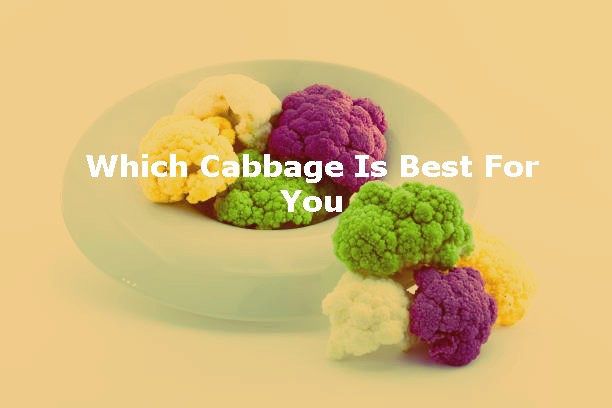
The question of which cabbage is best for you is mostly a matter of what your taste buds prefer or what type of food you are making.
Green cabbage which is more commonly available can be used for just about anything, it has a mild flavor with a slightly peppery and bitter taste.
Red cabbage on the other hand is similar to green cabbage except for the color it brings to the table. It also has a hint of sweetness. So if you are looking for a colorful alternative to green cabbage, red cabbage is a great choice.
Napa cabbage otherwise known as Chinese cabbage stands out as the most tender variety. It is used in a variety of Asian cuisines and works well in stir-fries and soup.
Finally, the color, shape, and texture of the Savoy which is more tender compared to red and green cabbages make it a great choice for dishes like wraps, stuffed cabbage, or cabbage rolls.
Which Cabbage Is The Healthiest?
All types of cabbage are low in calories and contain a variety of nutrients that are good for the body so picking out one cabbage as the healthiest isn’t realistic. The “healthiest” cabbage for a person would depend on the specific nutrient that he/she prioritizes per time period. Below is a table that provides a comparison of the approximate values of the nutrients found in 100g of each cabbage (primarily sourced from nutritionvalue.org):
| Nutrient (per 100g) | Green Cabbage | Red Cabbage | Savoy Cabbage | Napa Cabbage |
| Calories | 25 | 31 | 27 | 12 |
| Protein | 1.3g | 1.4g | 2g | 1.1g |
| Carbohydrates | 5.8g | 7.4g | 6.1g | 2.2g |
| Dietary Fiber | 2.5g | 2.1g | 3.1g | 1.0g |
| Sugars | 3.2g | 3.8g | 2.3g | 1.1g |
| Fats | 0.1g | 0.2g | 0.1g | 0.2g |
| Vitamin C | 36.6mg | 36.6mg | 28.1mg | 19.0mg |
| Vitamin K | 76.0mcg | 38.2mcg | 68.8mcg | 38.0mcg |
| Folate | 43.0mcg | 18.0mcg | 80.0mcg | 43.0mcg |
| Calcium | 40.0mg | 45.0mg | 35.0mg | 29.0mg |
| Iron | 0.5mg | 0.8mg | 0.5mg | 0.8mg |
| Potassium | 170mg | 243mg | 230mg | 87mg |
Which Cabbage Tastes Better?
While each cabbage variety has its distinct taste and flavor, the choice of which is best will vary from person to person because as our faces are different, so are our taste buds. Let’s recap the flavor profile of each variety:
- Green Cabbage – mild, slightly bitter, and peppery taste when eaten raw, sweet when cooked.
- Red Cabbage: similar in flavor to the green cabbage but is crunchy with a nice sweet flavor
- Savoy Cabbage: softer texture, much bitter variety.
- Napa Cabbage: very tender, crisp, and slightly sweet flavor when eaten raw.
So, go ahead and give each a try, and let your taste buds decide!
Which Cabbage Has The Most Protein?
Cabbage, no matter the type, is usually not considered a rich source of protein. But, if we were to name the cabbage variety with the highest protein content, that would be Savoy cabbage which contains about 2g of protein per 100g of cabbage.
Which Cabbage Is Easiest To Digest?
Napa cabbage is considered the easiest to digest because it is tender and has a high water content which helps to support healthy digestion and regular bowel movements.
Which Cabbage Is Best For Coleslaw?
When it comes to making coleslaw, green cabbage is the classic! Besides being the most common variety and arguably the most affordable, green cabbage is mild in flavor when eaten raw and won’t overpower other ingredients.
Which Cabbage Is Good For Weight Loss?
All cabbages, whether green or red or savoy, are low-calorie vegetables with high fiber content, making them an excellent choice for weight loss.
Drawbacks of Eating Too Much Cabbage
No doubt, vegetables are healthy and we are advised to take them regularly. But, like with everything we do, we should do it in moderation. Eating lots of cabbage has been associated with side effects such as belching, abdominal discomfort, bloating, and passing of gas. It could also cause diarrhea in people with bowel syndromes. Excessively lower blood sugar levels, or deficiency of minerals such as iodine.
Eating other foods rich in other nutrients will provide a rich and healthy blend for you.
Which Cabbage Is Best For You – Final Thought
In the end, only YOU can decide what cabbage is best for YOU and I trust that at this point you have made a decision. All cabbages are great cabbage so you can be sure that whatever choice you make is the best for you!
FAQ
What cabbage is used in stir fry?
Napa cabbage is the most common variety used in stir-fry recipes, but you can also use green cabbage or red cabbage in stir-fries.
What cabbage do the Japanese use?
Chinese cabbage (napa cabbage) is a staple in a lot of Asian cuisines and the most used type of cabbage in Japanese cuisine.
What cabbage is best for sauerkraut?
Green cabbage is generally considered to be the best for sauerkraut.
Are cabbage worms poisonous?
Cabbage worms in themselves are harmless if accidentally ingested but they may have come in contact with other harmful substances so endeavor to wash your cabbages thoroughly.
Are cabbage leaves edible?
Yes! I mean, that’s the point of this entire article. Every part of the cabbage plant is edible.

